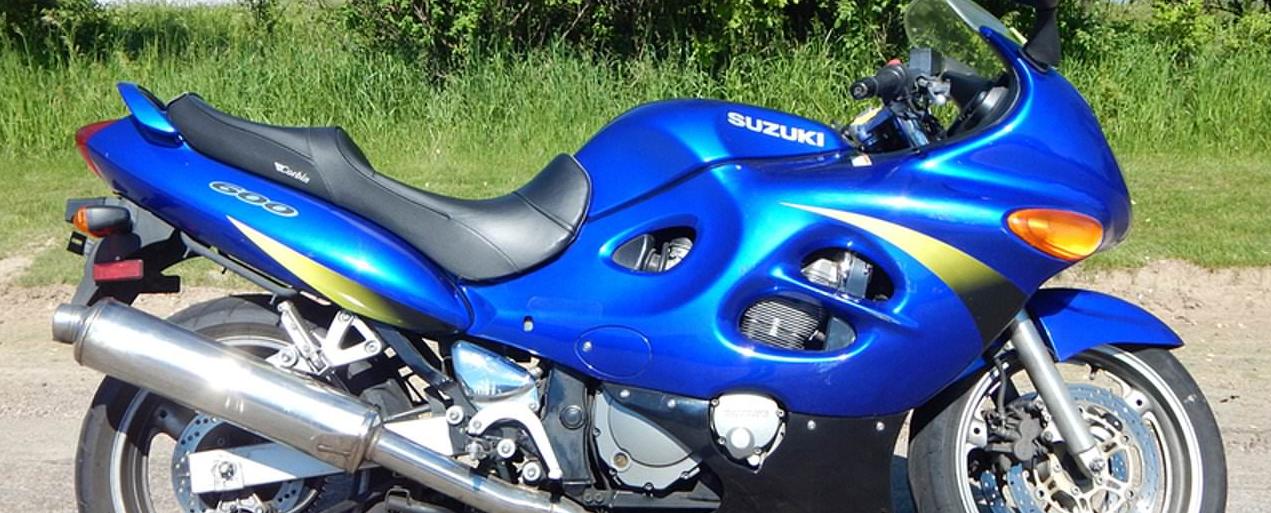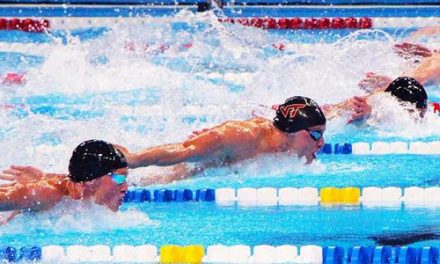In June of 2008 I wrote a little guide about the ins and outs of motorcycling, based on my academic research and limited practical experience. I know a number of people who ride, or are interested in riding, and so I thought I’d post these words in hopes that they would give some context and knowledge I wish I had when I was starting out.
Turns
Bicycles, cars, and motorcycles are very simple, from a physics point of view – they go forward, and are best at going forward when they are perpendicular to the ground. This is admittedly less visible with a car, as they have quite a larger X-axis wheel base than either bicycles or motorcycles. This brings us to the idea of elevation. Roads, and most specifically turns, are elevated (or ”graded”) in one of three ways – no grade, standard grade, or reverse grade. No grade is just that – the turn is flat, which may prove irksome for motorcyclists who rely on their vehicle being leaned one way or the other to turn. Standard grade is a very pleasant thing for motorcyclists, and at higher grades even for automobiles – this means that, for example in a left-hand turn, the right-hand side of the road is higher than the left-hand side, providing stability that offsets the turning force; another way to picture this is that, as a motorcycle is most stable when perpendicular to the ground, if while in a turn it can remain perpendicular, due to the road’s angle, they are just as stable as if they were riding straight on a level road. People who design roads with reverse grades need to have their phone numbers given to telemarketers, because they are the devil. This means that, again for a left-hand turn, the left-hand side of the road is higher than the right. What does this mean? This means that not only is there no help from the road in offsetting the pressure turning puts on a motorcycle, it means the motorcycle has to lean farther, further destabilizing the turn. Most unpleasant.
Many people who have done research into motorcycling have come across the term ”counter-steering.”I’d like to help explain that term, if you’d allow. No objections? Excellent. Many non-motorcyclists would argue that riding a motorcycle and a bicycle is veritably the same; lean a little to turn, push the handlebars left and right to turn left and right, respectively. So far so good as concerns with slow speeds, but what happens at higher speeds? Once you pass twenty or so miles per hour, the handlebars actually do very little, except serve to throw you over them if you yank on them too hard. When you are at speed, turning the handlebar even a little results in the bike wanting to move the opposite direction. ”Christopher,” I’ve been asked, ”why is that?” It relates very much with the angle of a turn, presented above. When you turn the front tire, even slightly, the section of the tire touching the road, called the ”contact patch,” turns as well, no longer exactly going the same direction as the motorcycle. If you move the handlebars right, as if you were turning right at very low speed, there is now less contact between the tire and the road on the left side of your centerline (yes, I’m simplifying greatly). This causes your bike to ”fall” to the left, just a little. What does this have to do with turning however? In short, practiced motorcyclists can use this technique to help make sharper turns while at speed than may be accomplished by leaning alone. It takes a long while to learn the limits of one’s countersteering ability at various speeds, but generally comes naturally with experience riding.
Traffic
When you ride a motorcycle, there is one thought that should be at the forefront of your mind, and it isn’t too far off the mark – ”I am invisible.” Even on your first outing on a motorcycle you will suddenly become aware of just how alien the idea of turn signals or mirrors are to the average American. Drivers will swerve in their lane in tune to whatever music or voices are sounding off in their head, throw things out of the window (I was hit by a cup of soda today; I was not pleased), and generally act as if everyone in the world should watch out for them, and not the reverse. The biggest problem I see with riders in regards to traffic is the tendency to stay in other drivers’ blind spots. This only exacerbates the problem, giving drivers even less chance to see them. While you are out riding, and checking all around you (you are constantly scanning traffic around and behind you, right?), be also aware of your position in relation to other cars, and think of where you will most likely be seen.
Turbulence
We’ve all experienced turbulence, and I don’t quite mean while flying the friendly skies. Many of us have been in small cars while a semi or other large vehicle passed us – that’s quite a jostle! Now imagine you have half the number of wheels for support and weigh one fifth as much, and you start to get the picture what it is like for motorcyclists. As cars move through the air, they push a shock wave to the front and sides of their vehicle. It doesn’t matter how big or small the vehicle, everything that moves through the air does this. On a motorcycle however, one must always be wary not just of what type and size of vehicle is passing them, but also what type and size of vehicle they are passing. When passing semis, buses, or other large transport-type vehicles, I actually have to lean into them slightly, else the force of their travel will knock me to the side, far off-balance, and likely into another lane of traffic. The closer I get to the front of their vehicle, the farther I have to lean, just to stay going forward. Once I reach the point of critical threshold however, when I pass their shock wave entirely, I have to straighten out else I’ll careen into their lane, and that helps nobody but my doctor’s bank account.
While the above may not be something that people expect when they first get on a bike, many people know to watch out for wind. Mind you however that wind comes from a variety of sources – not only does it roll across flat plains, but it streams down (or up) hillsides, especially those we have here in the Bay Area (Sausalito, I’m looking at you). They can be troublesome even for the most experienced rider, especially with a large profile (sitting straight up or reclined, on a big bike; that’s a lot of surface area for the wind to push against), but gusts are another factor of riding. Unfortunately, little can help you handle them other than experience, aside from the advice that you make yourself as small a target for the wind to blow. As difficult as it can be to deal with while riding straight, powerful gusts while turning can be more than just heart-stopping, they can, in extreme situations, force the bike out from under you. Last year the Bay Bridge was shut down to motorcyclists for several days due to high winds. Think about that for a second. Yuck.
Being Comfortable
Everyone who rides a motorcycle has a different reason for doing so – for sheer joy of the road, economy, style, ease of parking, or any of a hundred thousand other reasons. No matter the length of the ride however, it is important to keep your mind on the road, and on the traffic, as explained above. One thing that can mar your attention is discomfort. Getting a rock to the face shield (you are wearing a full-face helmet aren’t you?) or gloves (you’ve invested in some leather, right?) can stun you and break your concentration, but so can the dull and painful ache of gear or positioning that doesn’t feel right. While my bike is a ”sport-touring” model, I’ve found I cannot spend more than three hours straight on it without a very nasty crick in my back, no matter my position. Similarly, while my armoured pants may fit over jeans or other pants, I wouldn’t advise it for longer rides; there just isn’t enough room to keep it comfortable. When you get on your bike, after you do the absolutely mandatory checks (please look at your tires, check your breaks, inspect your chain, and do the rest full pre-ride condition survey every ride, no exceptions), take a few moments to ensure your gear is fitting correctly in all the right places – I didn’t do this yesterday and trust me, I was sore after the hour and a half commute, in several places I wouldn’t mention in good company. Don’t let this happen to you!















